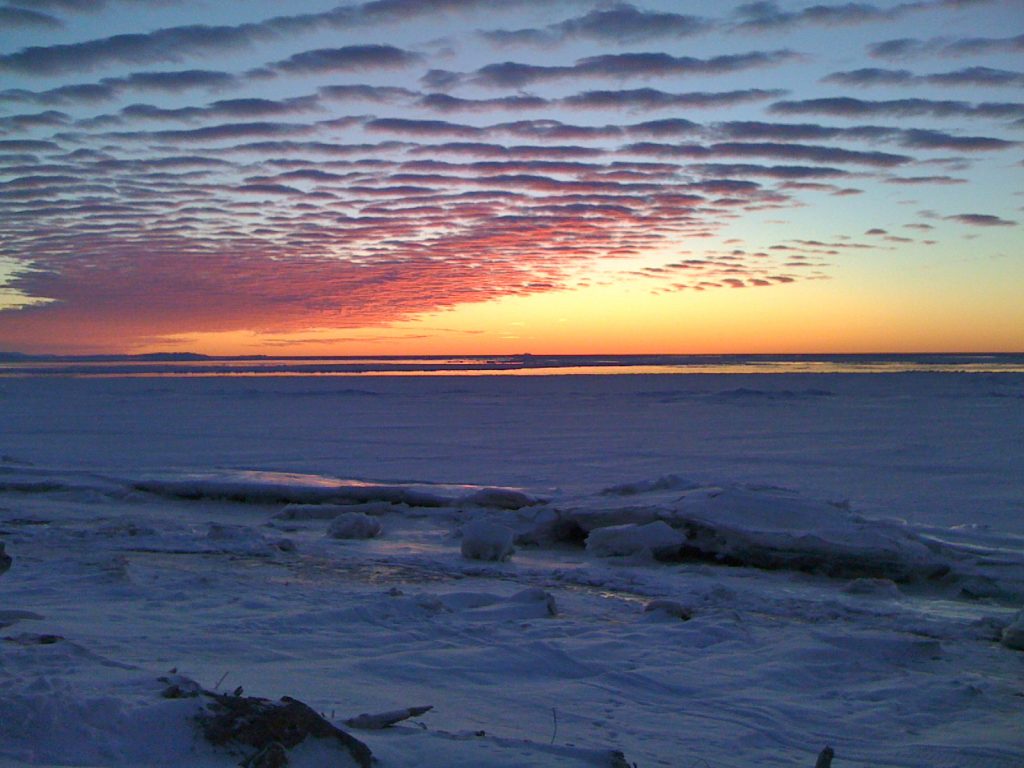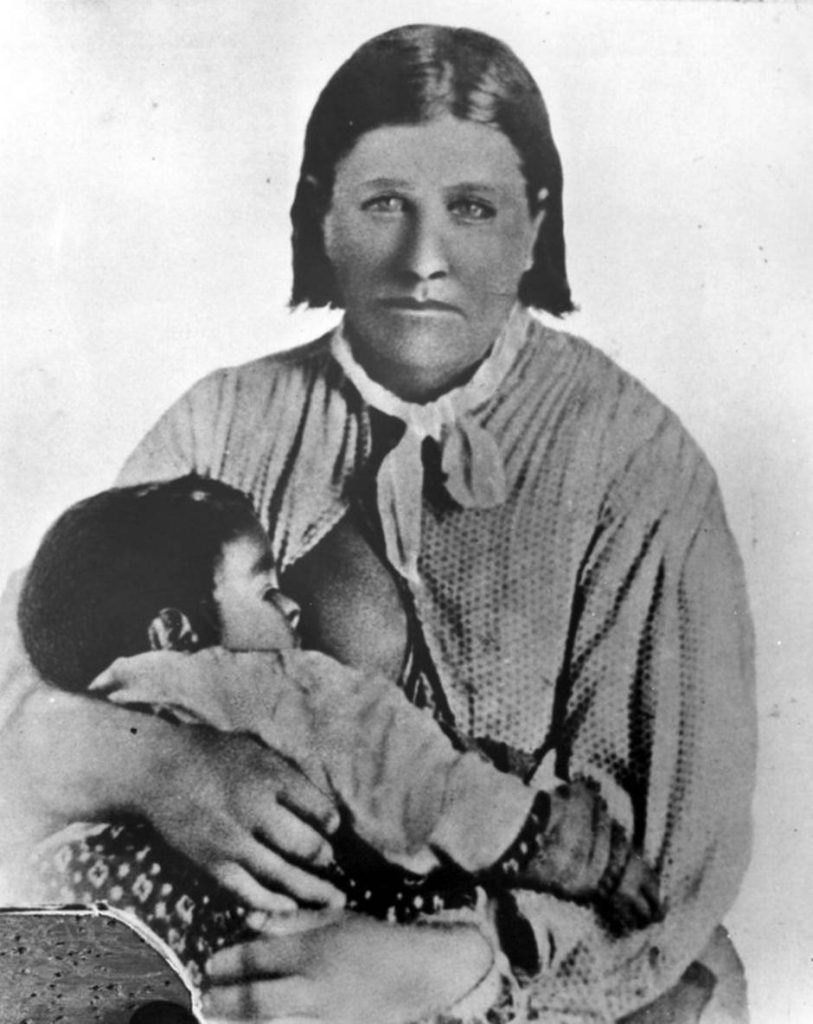Past Imperfect
Let’s start with some old dirt.
Who were the first people to arrive in North America more than 12,000 years ago? Did these intrepid explorers originate in Siberia and cross the frozen straits of Beringia? Or were they mariners who bravely struck out into the Pacific, heading east into the blue unknown? Who were the people to first call North America home?
For more than a century, archaeologists have tried to solve this mystery using mainly one kind of evidence: the material objects the first settlers left behind, buried in the dirt. In recent years, however, an important new line of evidence has emerged: the genetic lineages of humans, which allow us to track the migratory histories of people as they’ve moved around the globe. It’s important to consider, however, what exactly each of these kinds of data—material and genetic—can and cannot tell us about our ancestors and ourselves.
As archaeologists, we are both blessed and cursed with the material culture that humans create. I say “blessed” because it is the material aspects of culture that allow us to interpret human behaviors and actions in the past; I say “cursed” because historical objects do not easily reveal the real cultures behind them. What this means, then, is that archaeologists reconstruct cultures using limited evidence. You might have heard about the “Ancestral Pueblo,” “Hopewell,” or “Mississippian” peoples. But these cultures did not really exist. The “Ancestral Puebloans”—a diverse range of people who lived in pueblo villages in the U.S. Southwest between 600 and 1,200 years ago—never called themselves that or considered themselves a unified culture. Rather, archaeologists invented the concept of “Ancestral Pueblo” to describe a certain cultural moment in Southwestern history, based almost exclusively on the materials these people left behind. It’s very hard to deeply understand past people based on material objects alone.
On the other hand, these objects can tell us an awful lot. Typically, material culture found in archaeological sites is comprised of durable objects such as stone and pottery, because these materials tend to be better preserved over time than bones, wood, fibers, and other organic materials. In special circumstances, such as in extremely dry or moist conditions, we get intriguing glimpses of what is missing in the vast majority of archaeological sites. Dry caves in the American Southwest show us the rich variety of materials used by early people. These include animal skins that were made into robes, clothing, and children’s toys; wooden objects crafted into arrow shafts, digging sticks, and split-twig figurines; feathers attached to arrows; plant fibers turned into baskets and sandals; and much more.
In the state of Washington, the Makah, a tribe of about 1,500 people, have an oral history that tells of a village that was swallowed by a mudslide about 450 years ago. Following a storm in the winter of 1969–1970, a hiker discovered wooden artifacts eroding out of the ground near the village of Ozette in Neah Bay, on the northwestern coast of the Olympic Peninsula, the ancestral home of the Makah. Ultimately, this find has yielded more than 55,000 artifacts, most made from wood, that were buried by the mudslide. The discovery offers insights into the wide range of materials used by inhabitants of what is now the American Northwest, prior to frequent European or Russian visitation.
As we study people who lived in the past, we use these sorts of materials to help us better understand how ideas and goods were shared between different groups of people. Artifacts can also reveal certain things about how people behaved and what they believed. Such materials are part of an imperfect approach to understanding past cultures, to be sure, but material remains bring us valuable insights into the early cultures of North America that other lines of evidence, such as genetics, simply cannot. What I mean by this is that genetics can help us determine ancestral relationships between individuals who contributed to the cultures of North America, but they do not tell us anything about the actual cultures of those early people.
My favorite example is from 19th-century Texas—the iconic case of Cynthia Ann Parker, a girl who was kidnapped from her German-American family by the Comanches in 1836. She was raised Comanche, married a Comanche man, and gave birth to Quanah Parker, who would become the last war chief of the Comanche. Cynthia Ann was “repatriated” to her German-American family around the age of 34 and spent the next 10 years of her life trying to return to her Comanche family. Genetically, Cynthia Ann was German-American, but culturally she identified as Comanche.
The problem is that genetic studies are too often interpreted as saying a lot about identity. For example, a recent DNA study revealed that the contested remains of the Ancient One, also known as Kennewick Man, a 9,300-year-old skeleton discovered in the state of Washington, are genetically “Native American.” Based on the skeleton’s physical characteristics, archaeologists had initially classified him as “Caucasoid,” and later deemed him to be more closely related to Polynesians or the Ainu people of Japan than to any other modern group. The DNA study showed that, in fact, the Colville tribe, located less than 200 miles away from where the Ancient One was discovered, are among his closest modern relatives.
This is a stunning find. And yet, it doesn’t tell us much of anything about the Ancient One’s cultural identity. We can safely assume he didn’t think of himself as “Native American.” He certainly didn’t know the word “Colville” (a French term). Who was he, really?
Genetic research can’t answer that question; it mostly tells us that the people known today as Native Americans, specifically the Colville, have common ancestry with the Ancient One. In contrast, archaeology can offer some clues about who he was. The way he was buried shows us that he was loved. A stone arrow point lodged in his hip tells us that he had enemies. We know from the chemical traces in his bones that he ate a lot of seafood. These archaeological clues and others tell us a great deal about what life was like for the Ancient One 9,300 years ago.
Genetics can offer scientific answers to questions about biological relationships, but it cannot provide deep insight into people’s cultural lives. For that we need archaeology.


































